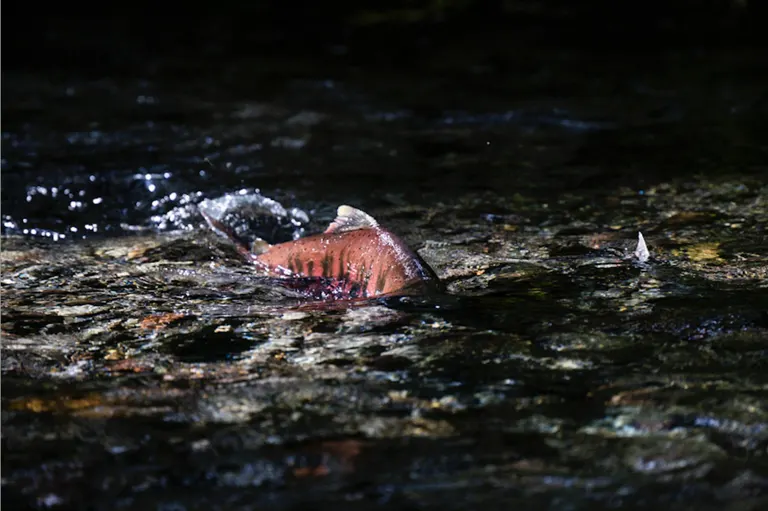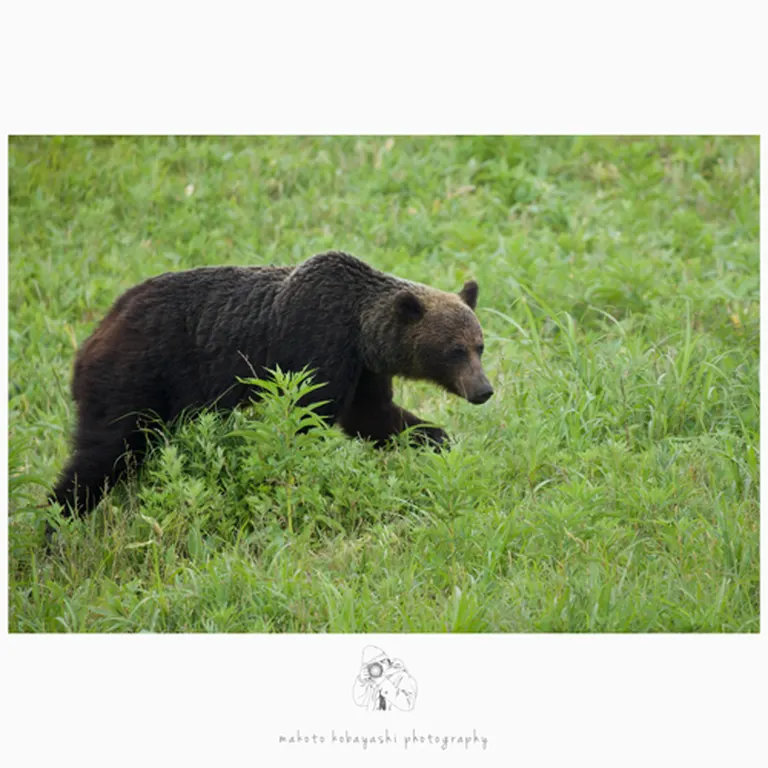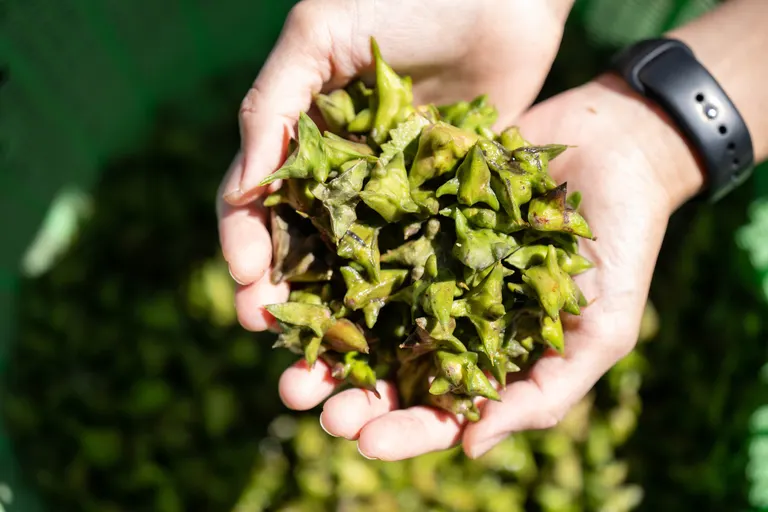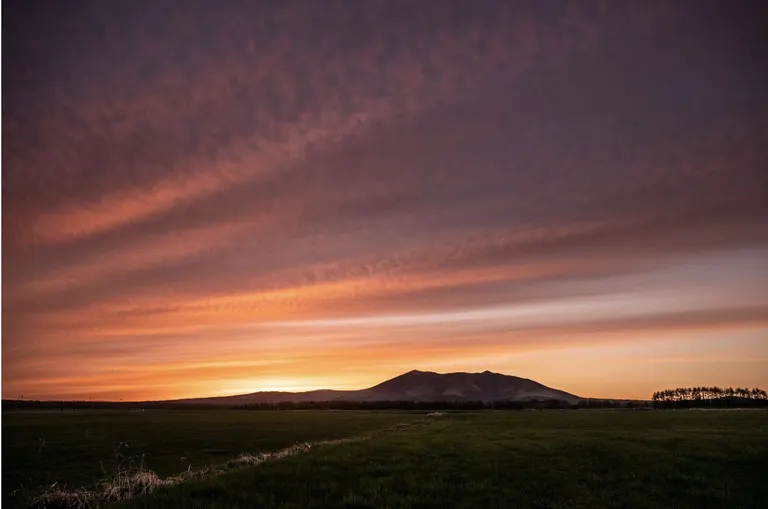![Spring has finally arrived! Beautiful new greenery, sunsets, and animals starting to raise their young [Series "Nakamichi Tomohiro's Shibecha Weather" (8)]|Domingo](https://p1-634a4370.imageflux.jp/w=768,f=webp:auto,q=78/https%3A%2F%2Fdomingo.ne.jp%2Fwp%2Fwp-content%2Fuploads%2F2022%2F05%2F3bcba16d829b56eb0677f6eb7630b3ce.jpg)
ARTICLES
Spring has finally arrived! Beautiful new greenery, sunsets, and animals starting to raise their young [Series "Nakamichi Tomohiro's Shibecha Weather" (8)]
My name is Tomohiro Nakamichi and I live in Shibecha town, Hokkaido. I will be sharing the charms of Shibecha town from my perspective on "Shibecha Weather." This time, I would like to introduce "Spring in Shibecha."
1. Beautiful new greenery and budding plants 2. Animal parenting season 3. The beauty of the sunset 4. Conclusion
Beautiful new greenery and budding plants
What do you imagine when you hear the word "spring"? For many people, it is cherry blossoms, but as someone who has just started living in Shibecha, Hokkaido, I imagine "fresh greenery."
Just when you think it's the end of winter, suddenly (or so it seems) the grass and trees sprout all at once, dyeing the whole land green, which is a spectacular sight. The green of Ibuki can only be felt in Hokkaido, where winter is a desolate landscape. Many people may take it for granted, but to me, it is a very impressive spring green.
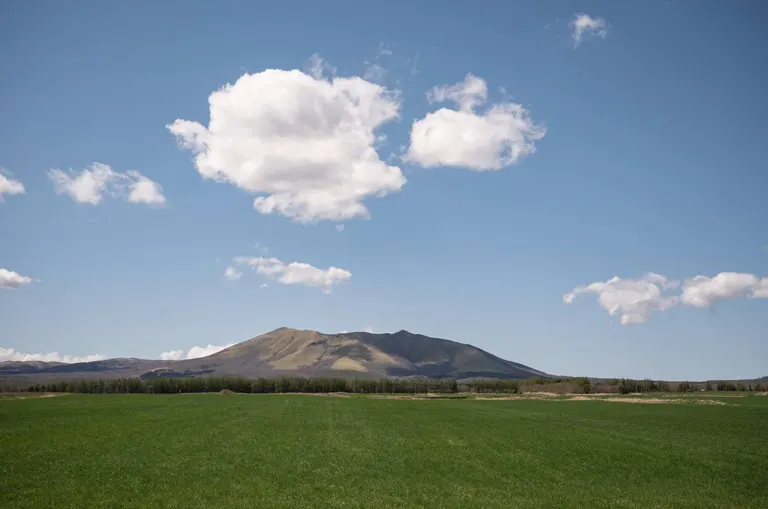
Mt. Nishibetsu and pastures bathed in fresh greenery
Spring is also the season when many different plants sprout. In Hokkaido, we tend to be captivated by the grand landscapes, but if you take the time to look down at the ground and scenery in front of you, you can feel the tiny lives of the plants.

Dandelions blooming at Tawadaira Observatory
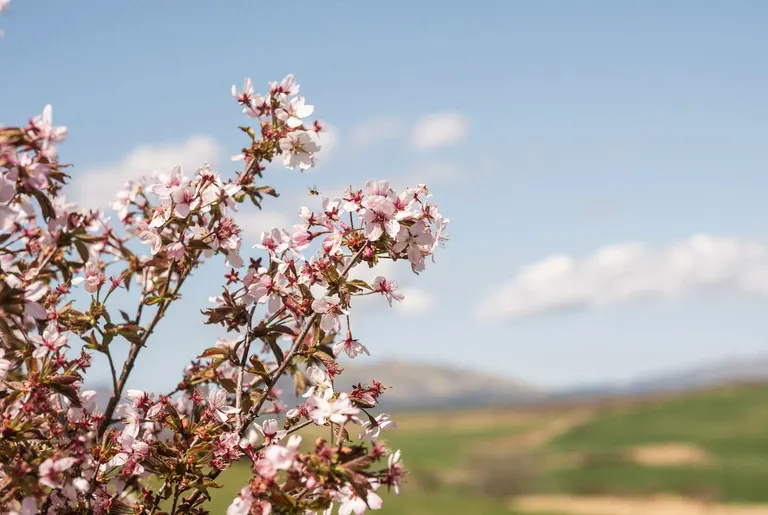
Ezosan cherry blossoms can be seen in Tawadaira.
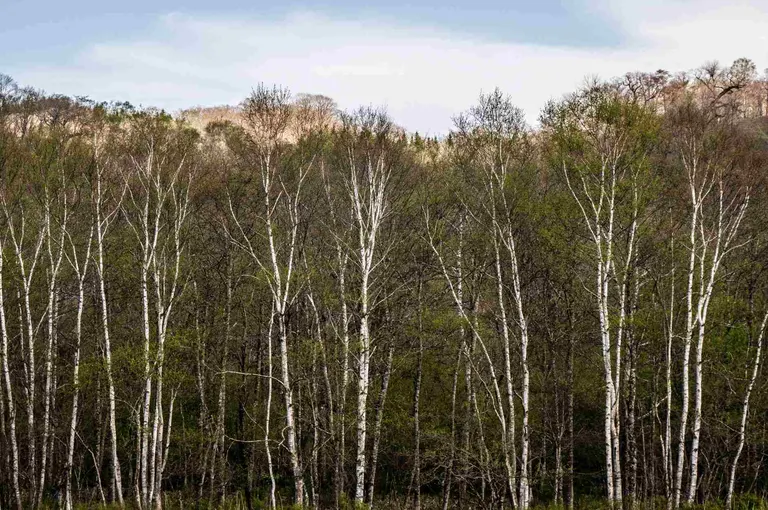
The birch trees, which are a symbol of Hokkaido, will also turn green.
Animal breeding season
Spring is the season for wild animals. Nurturing their young starts all over the place, creating a lively atmosphere. In Shibecha Town, you can see not only foxes and deer, but also red-crowned cranes, a national special natural monument, raising their young.
Shibecha Town has abundant water sources and good quality wetlands, providing the perfect environment for them to protect themselves from predators. The red-crowned cranes are famous for their winter appearance, but they are actually resident birds that stay all year round. During the spring breeding season, there are fewer photographers, making Shibecha a hidden gem where you can see the cranes.
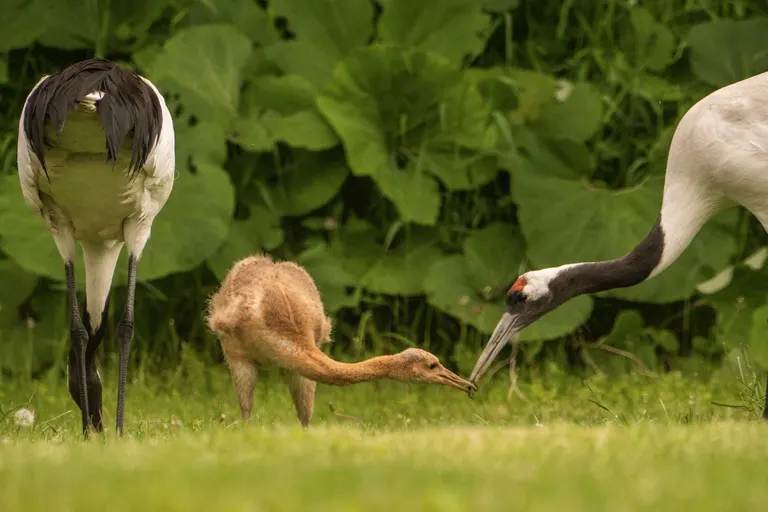
Red-crowned cranes raising their young. You can gradually see them from late spring onwards.
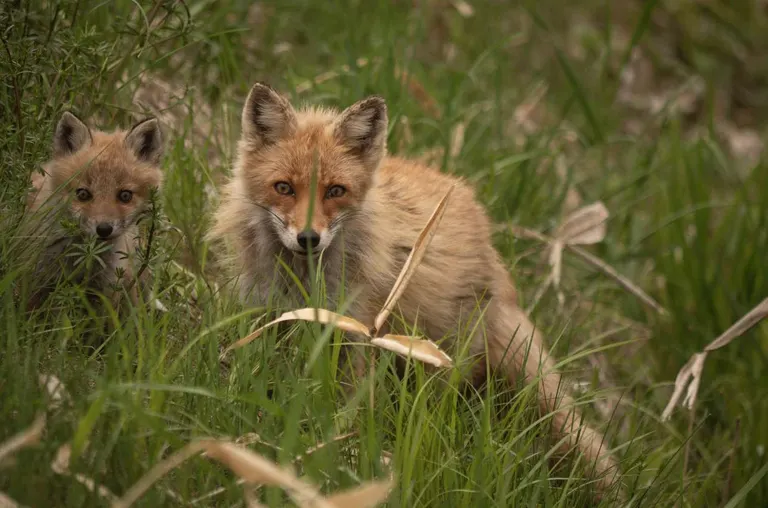
A mother and her fox. If you're lucky, you might even spot them on the side of the road.
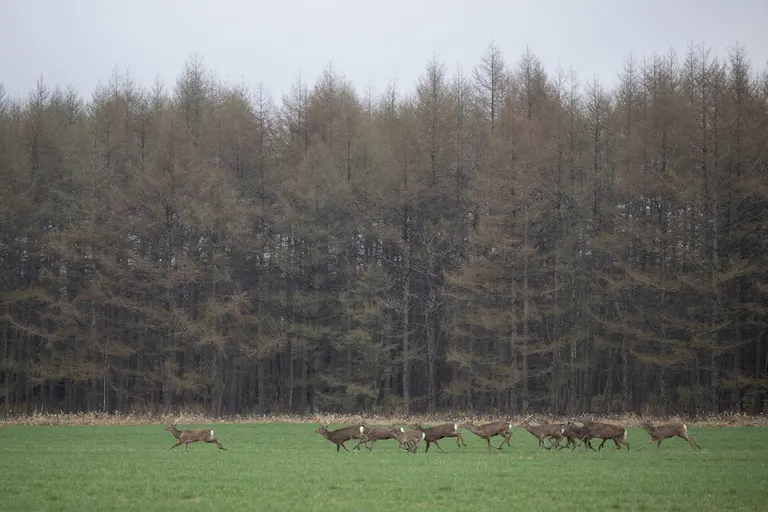
After surviving the harsh winter, the Ezo deer head to the pastures in search of fresh grass.

A snow hare has just finished molting and is raising its young in a pasture.
There are countless examples like this, but spring in Shibecha and Hokkaido is a shining season for animals and plants. The pastures that we usually pass by without noticing are brimming with life if we look closely. We encourage you to see the nature of Shibecha with your own eyes. I'm sure you'll find the scenery you're used to completely different.
The beauty of the sunset
The last thing I'd like to talk about is the beauty of the sunset. I feel that the sunsets at this time of year are especially beautiful. Perhaps it's due to the weather and temperature, but I feel like the sun often burns beautifully.
Also, unlike winter, clouds often appear, adding even more beauty to the evening scenery. One of the things that moved me most since moving to Shibecha Town was this sunset.
When I lived in the city, the sun would hide between the buildings and sink behind them. But here, the sun sets beyond the horizon. And even after the sun has set, you can still enjoy the view of the burning sky.
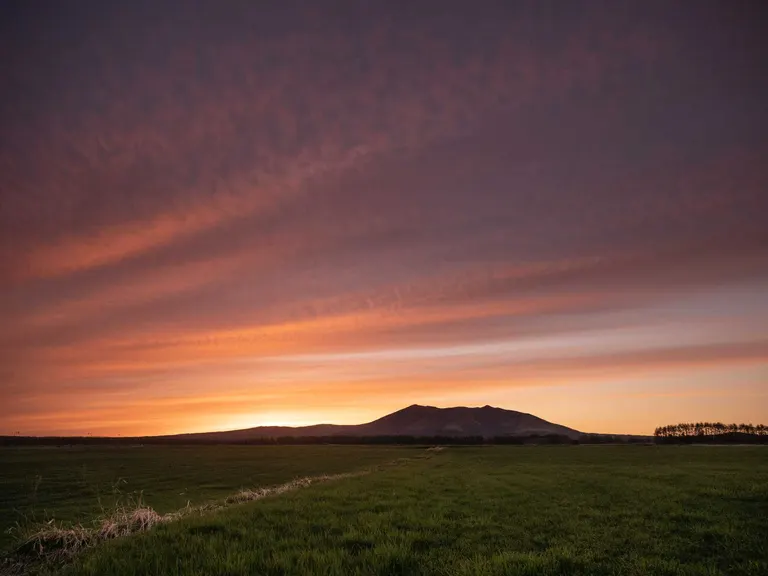
Sunset over Mt. Nishibetsu
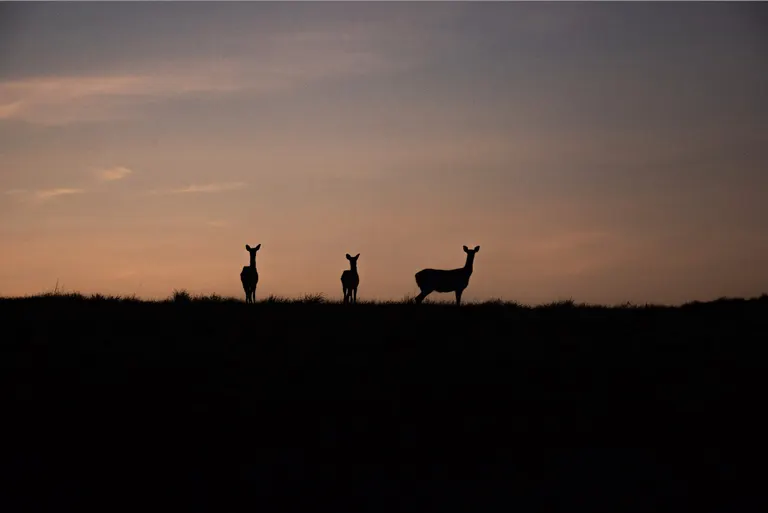
Evening scenery and deer. Scenery like this can only be seen in Shibecha Town, which has many plains.

Sunset at Lake Shirarutoro. You can see the sun sinking over the horizon along with the lake.
Conclusion
What did you think? This time, I have shared with you my personal thoughts on the charms of spring in Shibecha Town. These scenes can be seen very well in Shibecha Town.
When you go sightseeing, try to look beyond the famous places and discover other places in Hokkaido. I'm sure you'll discover new things to discover about Hokkaido.
Author profile
 Shibecha Town Regional Revitalization Volunteer, Photographer, and Video Creator
Tomohiro Nakamichi
Shibecha Town Regional Revitalization Volunteer, Photographer, and Video Creator
Tomohiro Nakamichi
Born in Noda City, Chiba Prefecture in 1988. Ever since he was a child, he has loved animals and nature, and in his 20s he was involved in training various dogs as a dog trainer. Five years ago he began taking photographs and making videos of nature and animals. He currently lives in the woods of Shibecha Town, Hokkaido, where 20 wolves were kept, with four dogs. He is currently publishing his works on various social media platforms, with the theme of "the relationship between humans and animals."
Previous articles on "Nakamichi Tomohiro's Shibecha Weather"
Part 1: Taking photos and videos in Shibecha, a treasure trove of nature Part 2: What Keiko Nakamoto from "Kurashi Koto Kina" teaches us Part 3: Six months after moving to Hokkaido. Living with nature Part 4: Revitalizing the town through YouTube! What is the true regional revitalization that Shibecha Town is aiming for? Part 5: Pocket Cafe in Shibecha Town. Introducing the SL exclusive menu Part 6: Protecting Hokkaido's horses, the "Hokkaido Washuuma" - Mr. Masato Kohama's challenge in Shibecha Town Episode 7: "I want to convey the beauty of Shibecha through photography" by Kaori Miyazawa






